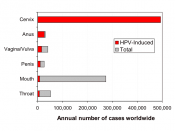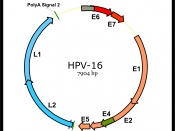Understanding cancer of the cervix
The organs and tissues of the body are made up of tiny building blocks called cells. Cancer is a disease of these cells.
It is important to realize that cancer is not a single disease with a single cause and a single type of treatment. There are more than 200 different kinds of cancer, each with its own name and treatment.
Although cells in different parts of the body may look and work differently, most repair and reproduce themselves in the same way. Normally, this division of cells takes place in an orderly and controlled manner. If, for some reason, the process gets out of control, the cells will continue to divide, developing into a lump which is called a tumor. Tumors can be either benign or malignant. Doctors can tell whether a tumor is benign or malignant by examining a small sample of cells under a microscope.
This is called a biopsy.
In a benign tumor the cells do not spread to other parts of the body and so are not cancerous. If they continue to grow at the original site, however, they may cause a problem by pressing on the surrounding organs.
A malignant tumor consists of cancer cells which have the ability to spread beyond the original site. If the tumor is left untreated, it may invade and destroy surrounding tissue. Sometimes cells break away from the original (primary) cancer and spread to other organs in the body through the bloodstream or lymphatic system. The lymphatic system is made up of a network of lymph glands (also called lymph nodes) connected by tiny lymph vessels. It carries lymph, a clear fluid produced by the body's tissues, around the body. Lymph contains white blood cells called lymphocytes which generally act as a defense...



Cervial Cancer
This essay is quite good, it has an extensive knowledge of the subject, but it would have been better if you had also mentioned the symptoms.
6 out of 6 people found this comment useful.